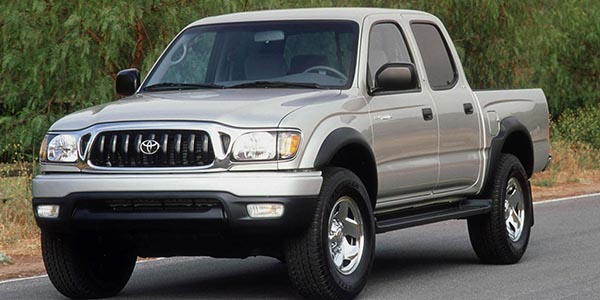
Here are the top Toyota brake tips that can save you from a comeback or lost productivity.
1.Check the Catalog: 1995-2004 TACOMA
When ordering parts for a V6 model, make sure you tell your parts supplier if you are working on a PreRunner or 4WD model. The calipers may look the same, but there are differences in the pads and rotors. Some electronic catalogs have trouble telling the difference.
2. Replace the Brake Hose if the Caliper has Over Heated
If you are replacing a caliper that has locked up and created a great deal of heat, you should also replace the brake hose. This is a good practice anytime, but particularly important with the Toyota line as the hose can fail at the caliper fitting after being subjected to the extreme heat.
3. Runout Remedy: All Models
You can lower the runout by changing the position of the rotor on the hub flange. With this technique, you can minimize the amount of material removed from the rotor during on-the-car machining. This can make a more thermally stable rotor that absorbs heat evenly and reduces pulsation comebacks.
4. Rear Axle Load Valve Low Pedal: 1995-2004 TACOMA
One problem area is the load-compensating valve that attaches to the rear axle. The mechanical linkage and the valve causes problems on some trucks by leaking and increasing braking distances. The main culprit is rust and corrosion. The valve is designed to change brake hydraulic pressure in the rear brakes as the load changes the relationship between the body and axle. Some technicians have reported the spare tire can come in contact with the linkage if the carrier mounting points fail due to corrosion. When replacing the unit, it is critical to adjust the linkage. Make sure there is 78 mm of distance between the center of the bolt on the axle shackle and the center of the bolt on the arm that connects the linkage to the valve for 2WD trucks and 120mm for 4WD trucks.
5. All Hybrids: Deactivating Hybrid System
If you are replacing calipers or other hydraulic components on a Prius or other Toyota Hybrid, you will have to deactivate the system with a scan tool. Most scan tools will walk you through the process that involves removing the two ABS pump relays and pumping the pedal in a sequence to depressurize the system. The system can also be deactivated by waiting for two minutes after turning the power switch OFF, stopping the brake pedal operation and closing the driver door before removing the two relays for the ABS system. Also, it is a good practice when working on vehicles with advanced ABS and Stability Control systems to remove the keys from the vehicle and place in a different room, like at the front counter. Also, it may take at least five minutes for the car to go into a sleep mode.
6. Hybrids: Brake Pad Considerations
The Prius has unique requirements for the brake system. On 2001-2004 models, the hydraulic brakes were not used until the vehicle was below 7 mph or if the vehicle had to make a hard stop. Later models use a more sophisticated system that may engage the brakes at higher speeds.
The majority of the time, the pads never reached conventional operating temperatures and corrosion could occur between the backing plate and friction material due to the fact that the pads never dried out. On some vehicles, the corrosion between the friction material and backing plate would cause a complete separation. Always use a high-quality pad for hybrid applications to avoid problems. It is not a question of better performance. It is a question of quality and engineering.
Since it is impossible to perform a conventional break-in/bedding procedure on the test drive, make sure the manufacturer promises excellent performance right out of the box. Also, applying a non-direction finish with a ball hone will help the new pads evenly deposit a layer of friction material to the new rotor.
7. Hybrids: Prius Brake Noise from Pedal
Some 2004-07 Prius Hybrids may produce an annoying squeaking sound when the brake pedal is applied or released. Toyota says the noise is most audible when the key is in the Ready mode with the vehicle not moving. A defective brake actuator assembly is the likely culprit.
Before condemning the actuator, however, try bleeding the brake system. If the noise goes away, you’re done with the fix. If the noise remains after getting out that last belch of air, replace the brake actuator with an upgraded unit, Part No. 44500-47090.
Article courtesy ImportCar.













